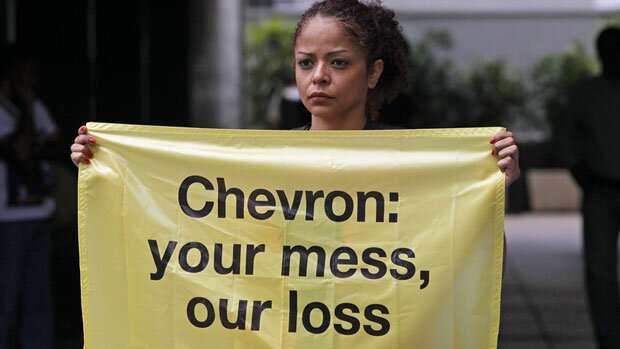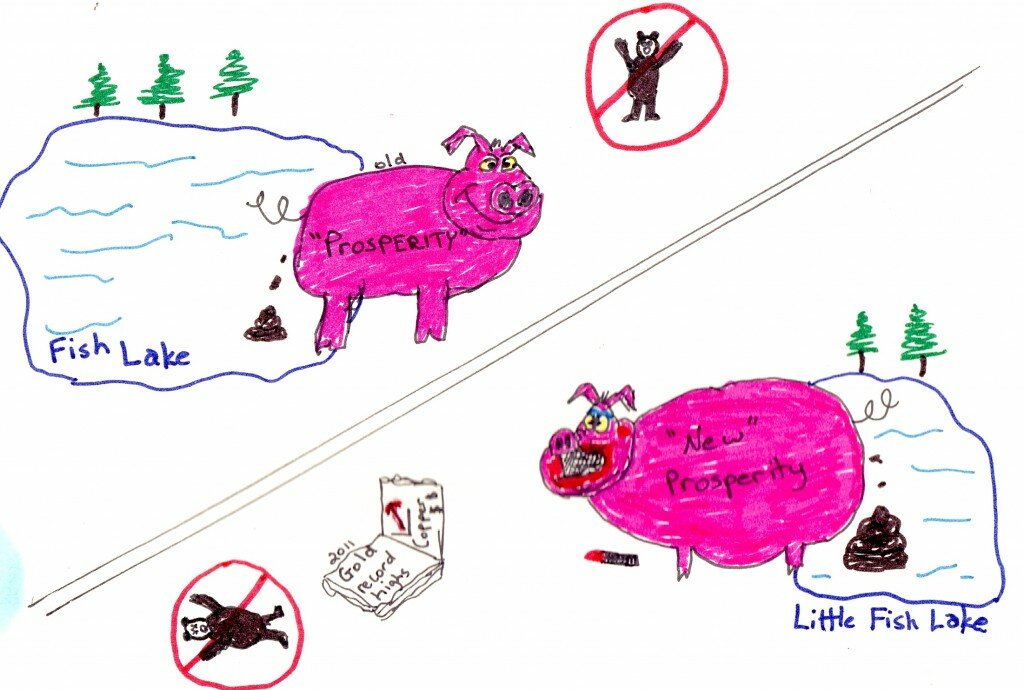
dave's North Pacific salmon "mysteries"
_ _ _ _ _ _
The Globe and Mail is running another article by Mark Hume on the apparent “disappearing sockeye salmon”…
What is killing British Columbia’s salmon? And just where is the crime scene?
Like Agatha Christie’s fictional detective, Hercule Poirot, B.C. Supreme Court Justice Bruce Cohen is faced with a mass of conflicting evidence as his federal inquiry tries to answer those questions and explain what happened to millions of salmon that have vanished at sea…
The article goes on to explain the ‘great mystery’ of declining sockeye populations on the Fraser River… and compares all the various “suspects” that may (or may not) play a part in the great decline of Fraser sockeye.
There is so much rhetoric and babble and apparent ‘complexity’ to this issue… so say the “experts” anyways…
However, let’s slow down for a second and explore a couple key pieces that Mr. Hume suggests in his article… starting with the second paragraph… “tries to… explain what happened to millions of salmon that have vanished at sea.”
Well, that’s an interesting statement… as… we don’t know — in the first place — how many baby sockeye went to sea. We have no frigging clue. The “experts” extrapolate from a variety of estimates of how many adults successfully spawned in the 4-6 years previous, and how many of those eggs in the gravel survived to become little tiny baby salmon (alevin).

little baby salmon - alevin - fresh from the gravel
As one might imagine, these little gaffers are pretty sensitive… not to mention that no shortage of other critters living in creeks, lakes and rivers have evolved to feast on the timing of these little things arriving out of the gravel — no different then any fly fisher who tries to time the various hatches of bugs and such to trick fish into biting their hooks wrapped in varieties of fuzz and other paraphernalia.
Then how many of those little alevin survived to either head to sea or hang out in a freshwater lake for one or two years — dodging any other complete system of predators and other threats.

salmon smolts, migrating out
Then how many of those youngster sockeye ‘smolts’ migrated out to sea, dodging a whole other slew of threats and predators and in the Fraser, then have to spend some time adjusting from fresh water critters to salt water critters — in amongst no shortage of sewage, tugs & barges, urban run-off, endocrine disruptors, periodic oil and fuel spills, and so on.
Then its run the gauntlet of the Salish Sea (Georgia Strait) — including salmon farms, walls of sea lice, and whatever else.
Then its the BC and Alaska coastlines, then “the sea”.
How many?
We have no frigging clue.
So essentially, we sort of have a mystery… of a mystery…of a mystery…
If we start talking about the mystery of “disappearing salmon”… or as referred to in the article as “vanishing salmon”… we don’t even know if they were there in the first place.
baby salmon… now you see ’em… now you don’t…. (oh wait, maybe this wasn’t a game of salmon peek-a-boo… they were just never there in the first place?).
_ _ _ _ _ _ _
I drew the image at the beginning of this post the other day as a suggestion of how we will never understand these apparent salmon “mysteries”… or “vanishing” or “disappearing acts”…
And nor should the load be put on Justice Cohen to ‘figure it out’… this isn’t a case of legal precedent, or evolution of the Code of Hammurabi, or Roman Law, or common law, or civil law, or stare decisis… not that our judges are not capable of dealing with all sorts of phenomenal complexities…
however to understand the great mysteries of nature, the North Pacific, and so on… I don’t think so, nor do I expect so… (even law is a great philosophical gray area of all sorts of complexities…)
As it says in my chicken scratch writing in the illustration: “try and disprove that this was the reason for the 2009 ‘disappearance’ of Fraser sockeye…”
Well… you can’t. Nobody can conclusively disprove my ‘theory’ for Fraser salmon disappearance. Just as I can’t ‘prove’ my theory…
Just as no one will be able to prove or disprove the apparent Fraser sockeye ‘vanishing’ or ‘disappearance’…
_ _ _ _ _ _
See here’s the thing…
“to vanish” means to: “disappear suddenly and completely.” And, for something to “disappear” it had to be there in the first place. Because disappear means:
1. To pass out of sight; vanish.
2. To cease to exist.
See, “dis” means: “do the opposite of” — and so the opposite of disappear is… “appear”
And the Latin roots of the word appear suggest it means: “to appear, come in sight, make an appearance.” Starting way back in the 13th century, the current meaning arose from: “to come into view.”
Thus there needed to be fish (e.g. Fraser sockeye) there in the first place — to come into view — for them to in turn: “disappear” or “vanish”.
But… well… ummmm… we don’t know if they were there in the first place (for example, appeared out of the gravel as alevins) for them to in turn…
dis appear.
We’re simply hypothesizing… (and sometimes, the thing with hypothesizing, is that the hypothesis might be wrong…)
Therefore… if this is a great mystery… and we’re looking for something that may not have existed in the first place… and we’re looking for a “culprit” that made something “vanish” that never may have in fact existed… is there a “mystery”?
_ _ _ _ _
As one of the over 100 comments to Mr. Hume’s articles suggests, something to the effect of: “ummm… wild salmon have been ‘disappearing’ across the BC coast for decades… is it any surprise that there are dwindling salmon populations in the Fraser…?”
See now this would be a more appropriate use of the term “disappear” because this refers specifically to the view that most coastal folks know intimately, that in recent memory there were thousands upon thousands upon thousands of wild salmon runs in every little trickle of water that hits the Pacific Ocean.
And that these thousands upon thousands of runs produced hundreds of thousands upon millions of adult salmon that returned year after year after year…
those runs have now largely… DISAPPEARED, VANISHED, NADA, ZILCH… EXTINCT…
_ _ _ _ _ _
wait a second…
there used to be close to 200 distinct Fraser sockeye stocks spread all over the Fraser watershed…?
now the number of stocks is a mere shadow of itself… the stocks have disappeared, as they were once certainly there before… (e.g. made an appearance)
When did that disappearance start…? hmmm… about 1880 or so… when mass salmon canneries opened up and down the Pacific Coast — from California to Alaska.
And then for the next 120 years, mass mixed stock fisheries continued to hammer and hammer and hammer away on wild salmon stocks all along the Pacific coast. Throw in a massive rock slide in the Fraser River in the lower reaches in 1913 and we have a recipe for disaster…
this isn’t meant to blame the fishers, they were simply doing what the regulations said they could… no different then people that get in deadly crashes while driving the speed limit of 100 km/hr… (e.g. speed kills…)
Fortunately, the incredible power of diversity (e.g. over 200 distinct evolutionary-evolved stocks) allowed the overall Fraser sockeye run to continue to return in big numbers (but still a shadow of the over 100 million Fraser sockeye of earlier years — pre-canneries — as Mr. Hume suggests in the article).
And then the 2000s (and maybe earlier) a vastly depleted resource — just as every other river and creek from California to BC will attest to — began to show signs of exhaustion, collapse, depletion…
Ever been at the finish line of a marathon or an Ironman triathlon — i’ve been to many — the look on the faces, and the condition of the bodies crossing the finishing line, is essentially what we’ve seen happen to Fraser sockeye in recent years.
Exhaustion and now extinction (e.g. like a ‘retired’ triathlete)… why?
Because we’ve subjected the runs and populations to a litany of abuses… they’re exhausted, depleted, and in need of serious recuperation and recovery. (which unfortunately, like after a triathlon is simply rest along with a few beer and a big steak…)
You know recuperation as in: “gradual healing (through rest) after sickness or injury”
For close to a century — 100 years — we humans have subjected the Fraser sockeye runs to close to 80% depletion, by injury (aka mixed stock fisheries) every single year, year after year, after year. And meanwhile, in the places where they have an opportunity to ‘regenerate’, we’ve been making a mess through habitat destruction, pollution, water draw-down, and conveniently warming up the water…
Added, the moment there is any sign of recovery… BWAMMO! hit them again with fisheries, get the nets in the water, “oh… we’re cautious now, we only take 60%…” says DFO official policy… the conservation-based, ecosystem-based… WILD SALMON POLICY
then add in the potential of foreign-imported diseases such as Infectious Salmon Anemia (ISA) — just one more European-rooted disease introduced to the BC Coast, or more sewage, or more Prozac, Cialis, and other not-good-enough-treated-sewage, add in a couple degrees of warming… and… and…
_ _ _ _ _
Unfortunately, it just seems that maybe we’re opening up the wrong doors and using the wrong language in this apparent “investigation” for finding “perpetrators” for something that may not have existed in the first place… (at least in the short-term view)
Just as I heard a discussion the other day on the radio… look at the worn out, cliche phrase: “war on drugs.”
Apparently, police forces, governments (e.g. G. Dubya Bush and his pa before), and policy and so on and so on… is engaged in this “WAR ON DRUGS“… yet since this phrase started circulating in the 1980s and so on, drugs and drug-related issues have only become more common, drugs are available cheaper, way more prevalent, way more common, and in way more places, and over 50% of the US prison population is made up of people in on drug-related charges… (a massive drain on government and public resources…)
(or how about the investigation and invasion of countries in the search of WMD’s…?)
Just like any ‘crime’ or ‘moral wrong’ or otherwise — what’s the best strategy for prevention in the first place…?
well… education, good parenting, good social institutions, and so on. (e.g. good ‘systems’)
Does telling our kids not to do drugs because there’s a: “WAR ON DRUGS !!” — going to be all that effective?
Probably not. Maybe looking at our language would allow for much more proactive, positive, and effective prevention strategies in the first place….?
_ _ _ _ _ _
See… when it comes to wild salmon the “perpetrator” in this apparent CRIME… this apparent MURDER MYSTERY is walking around in plain sight, free to do as s/he pleases, no day pass, no ankle bracelet for monitoring, no parole officer… all you have to do is… look in a mirror…
…and then sit down with others in the community to facilitate and develop a suitable prescription for healing and recuperation…
hmmm… like a CITIZEN’S ASSEMBLY… as opposed to a quasi-court-of-law approach with judges and lawyers and yellow “DO NOT CROSS” ticker tape parades, and salmon chalk lines, and confidentiality agreements and RED TAPE bureaucracy celebrations, and “I’m sorry sir, I cannot recall…”, and adversarial cross-examination, and character assassination, and… and… and…
Time for a new approach?
what say you…?









